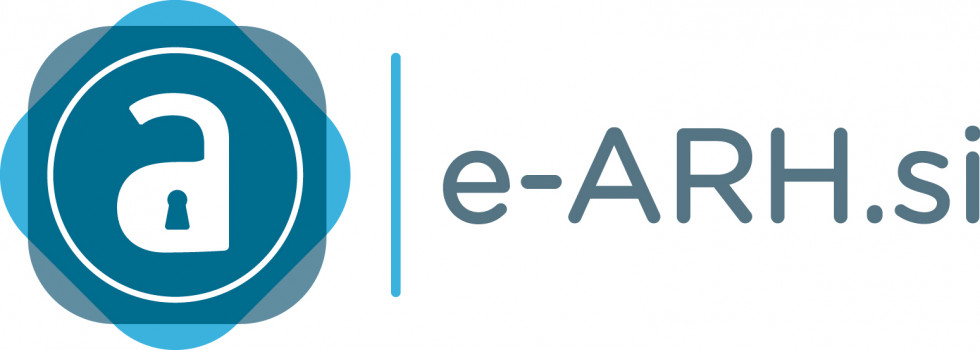Slovenian electronic archives
Implementation of information technology in our everyday lives and electronic archival records
Due to widespread implementation of information technology in our everyday lives and because of its extensive use in all areas and at all levels of modern society, current and archival records are now being produced in a number of different forms. In addition to traditional physical (paper) records, which Slovenian archivists have had decades of experience with, we are currently witnessing an increase in the production of modern electronic records, which in terms of importance are equal to those created in physical form. Due to long-term relative instability of their form and media modern electronic records are exposed to numerous threats of getting damaged or lost. This notion poses a complex professional challenge for the Slovenian public archival service, united into the Slovenian public archival network. Our mission is to preserve that part of newly created records which constitutes Slovenian cultural heritage (is of permanent importance for history, culture and other sciences) and ensures legal security to natural and legal persons (is of permanent importance for their legal interest), and we need to do that regardless of different media and forms such records appear in.
Long-term preservation of electronic archival records
Long-term preservation of electronic archival records means observation of such a record throughout its entire life cycle, from its creation to its transfer to competent archival institution. The Slovenian electronic archives or in abbreviation e.ARH.si in this respect represents a complex environment which ensures long-term preservation of electronic archival records, whose custodians are Slovenian public archives. It includes procedures for submitting digitized and born digital records into archival institutions and their long-term preservation according to the fundamental principles of secure long-term preservation as defined by the Protection of Documents and Archives and Archival Institution Act (principle of accessibility, usability, integrity, authenticity, durability). It also includes procedures to ensure further accessibility of such records and possibilities of their re-use. Long-term preservation and re-use of electronic records, however, is not comparable to long-term preservation of records in physical (paper) form, since electronic documents will in the course of their life cycle probably change a number of different information environments, contexts and administrators.
Over a decade ago, in 2008, the Archives of the Republic of Slovenia, in cooperation with experts from Slovenia and abroad, took on the tasks of preparing a feasibility study to establish Slovenian electronic archives. In the study we specified financial and human resources as well as the technical framework needed to ensure an efficient and legally consistent long-term preservation of electronic archival records. Estimated cost for such a project was 7,1 million EUR (without VAT). After receiving a tenth of the funding needed from European cohesion funds, Slovenian state archives set out to partially achieve its goals between 2010 and 2015. Initial e-archiving solutions were developed, together with tools by means of which producers of electronic archival records could transfer their records to competent archival institutions and by means of which archivists and users could then get access to such records. These solutions enabled ingest of electronic archival records as unstructured files (such as pdf. files), as well as ingest of data from simple databases (such as official records) and from electronic document management system SPIS 4.0, which is widely used in Slovenian state administration. For long-term preservation of electronic archival records, a digital repository was established on one primary location and on two geographically remote secondary locations.
Establishment of Slovenian electronic archives
The turning point in establishing Slovenian electronic archives came in 2016, when the Government of the Republic of Slovenia adopted the Strategy and Implementation Plan for the Development of the Slovenian Public Electronic Archives e-ARH.si. This strategic document enabled the further development of e-ARH.si system, which is a safe, standardized and trustworthy Slovenian electronic archives for long-term preservation and re-use of electronic archival records.
Our work by 2020 includes six strategic priorities:
- to ensure the care of electronic archival records at creators and preparation for their submission to the e-ARH.si.
- to guarantee long-term preservation of all electronic archival records submitted to the e-ARH.si.
- to ensure that electronic archival records are readily accessible and can be reused when required.
- to actively engage with other national and international electronic archiving institutions.
- to provide training, information, and support for the creators of electronic records and for archivists.
- to meet quality assurance standards in accordance with the Common Assessment Framework (CAF) and promote e-ARH.si
To accomplish these priorities we implemented 23 key measures and 65 activities. By striving to create a stable and trustworthy Slovenian electronic archives e.ARH.si by 2020, we are creating a proper information infrastructure and the rest of the conditions needed to preserve and enable continuous use of Slovenia's archival cultural heritage in electronic form.
Development of the Slovenian public electronic archives (e-ARH.si)
-
e-ARH.si Project
Completede-ARH.si is a complex environment intended for e-archiving. It includes procedures for submitting digitized and born digital records into the public Archives as well as their processing, long-term preservation (in accordance with valid legislation), and further use.


